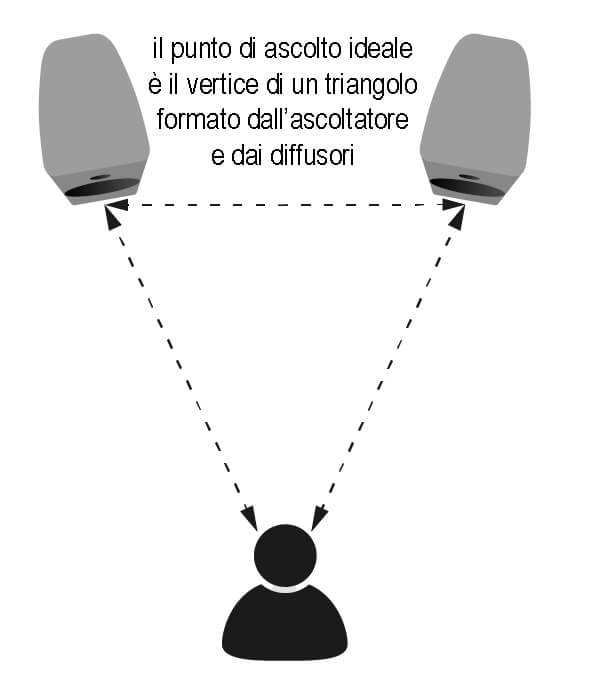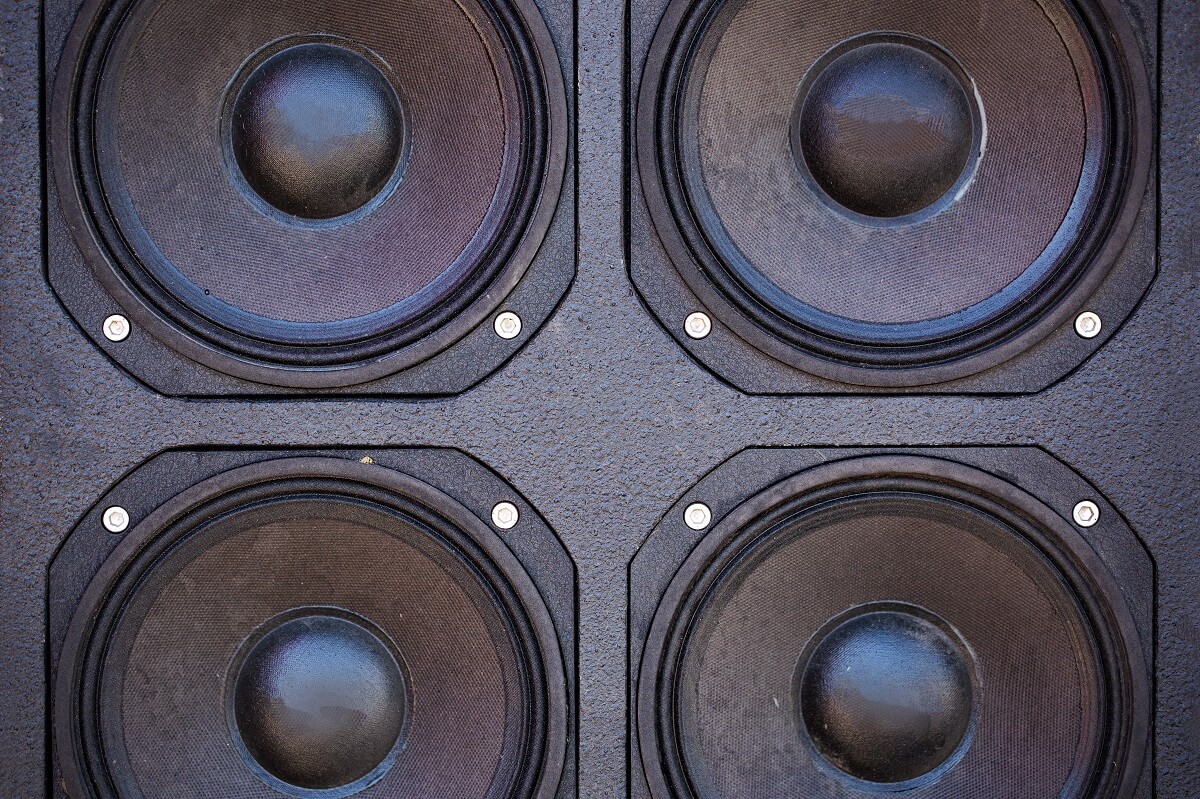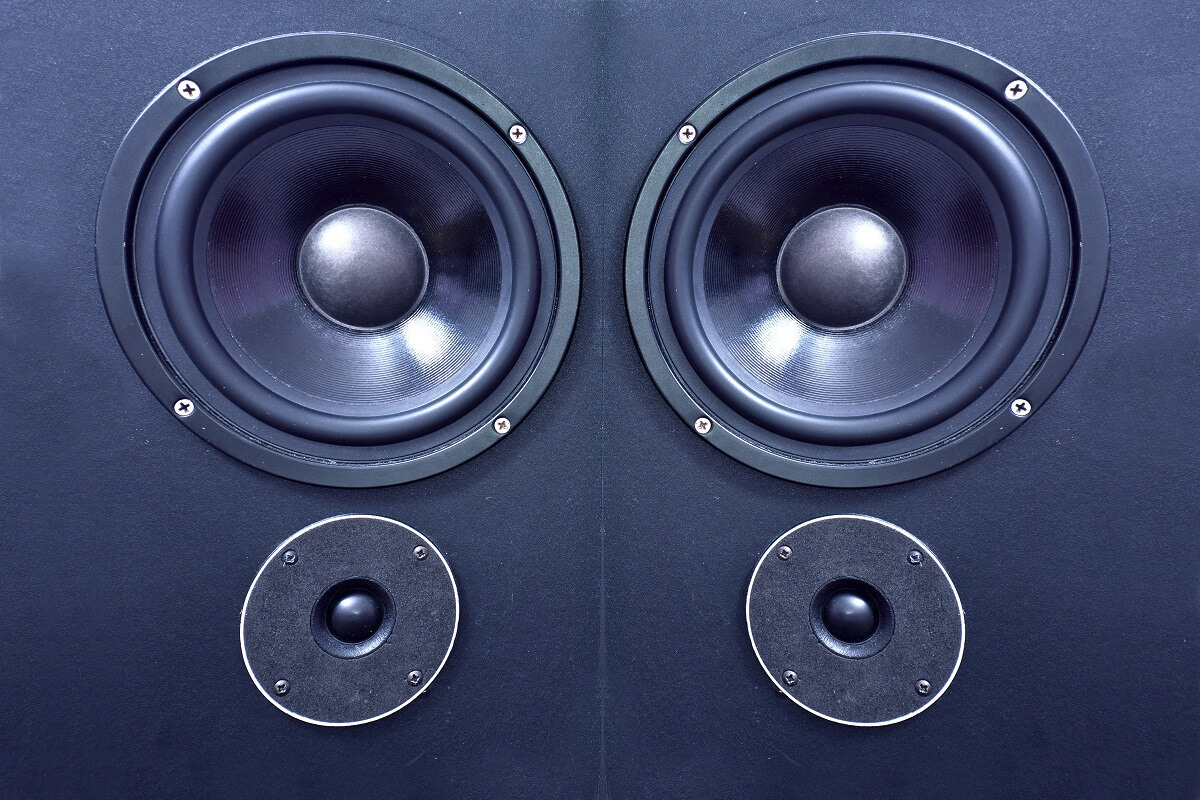- Speakers
- 3936 likes
- 70022 views
How to place loudspeakers in a room: the quick guide
Figuring out how to place loudspeakers in one's room is undoubtedly one of the most interesting challenges for audiophiles. Because buying the components of one's system, and calculating the correct amplification power for the room involved, are only the first steps in a more complex (and exciting) process.
In this article, then, we want to offer some suggestions that can help you understand how speakers in a home system should be placed.
Why is it important to understand How to Position Acoustic Speakers?
Sound is made up of mechanical waves. Understanding what this means is really simple. Just turn on the TV in a room, and listen to what happens when you leave the room and close the door. The waves break on the door leaf, and thus the listener perceives a lower volume.
This simple phenomenon is enough to explain why it is necessary to calculate the position of one's audio equipment. The more you can place them in the proper manner, the better the performance will be. The primary goal is to eliminate so-called reflections, that is, the bouncing action of sound waves off walls and windows.
In other words, the sound you hear must really come from the speakers, and not from a point in the room on which sound waves bounce. This is the only way to avoid confusion about the actual directionality of sound, and to have adequate sound performance.
What can be the ideal speaker arrangement?
In principle, there is no correct answer for all cases and all chambers. Wanting to give a theoretical example, however, it is possible to say that in a well-proportioned room, theory dictates that the speakers should be placed at the two central points of an ideal ellipse touching the walls of the room.
The listening position, in this case, should be totally centered between the speakers, with the listener's head placed 30 to 90 cm from the rear wall. In this way, the very first reflections are eliminated and the separation between the speakers is increased, creating the right spatiality.
Another well-known example is that of the triangle. That is, the listener must be at the top vertex of an isosceles triangle with angles of at least 60 degrees. The other two vertices are occupied by the speakers.

Speakers and Room Size: how are these factors related?
One of the factors to be considered most carefully is definitely the size of the room in which you are operating.
Generally, the distance from the loudspeaker to the ear should be at least 1.5 m compared to the distance that separates the loudspeaker from a surface, and then from the listener's ear. The reason? Avoid reflections.
If reflected sound from surfaces arrives at least 5 milliseconds after the sound emitted by the speaker, our brain cannot determine whether the audio signal is coming from the speaker itself, or from another location in the room.
Therefore, with these few data in mind, it is possible to determine a formula for identifying the listening position:
- Suppose we are in a room in which the distance between ear and speaker is 2 m, while the distance of the speaker from the nearest wall is 1.7 m, and the distance between the ear and the same wall is 2.6 m;
- The total distance-with so much reflection-is 4.3 m (i.e., the sum of 1.7 and 2.6);
- At this point a simple subtraction is performed, i.e., 4.3 meters - 2 meters, which is the total distance minus the distance between ear and source;
- The resulting figure is 2.3, greater than 1.5 meters. The positioning, therefore, is correct.
Tilting Acoustic Speakers: what is it for? Is there a general rule?
That oftilt with respect to the wall is another one of those very common questions when you want to delve into speaker placement.
Generally speaking, the most correct answer we feel to give is that there is no general rule. This is because the tilt constitutes a possible adjustment to be made once the first positioning is decided.
In other words, it is possible to adjust the tilt to correct any, minor flaws still found after finding an ideal speaker position. Each case is a universe unto itself. You have to consider the power of the system, the type of room and the square footage.
Let's say that "try, listen and in case try again" seems to be theright approach in this case. Because by acting on the incidence of the speakers you are going to change sound directivity profiles, emission delays, response and reflections. In other words, it is a process that involves trial and error. And in any case, if the result does not satisfy, you can always return to the initial position without any particular problems.

At what height to place the speakers? Is it possible to place the speakers high?
This is also a topic that would deserve in-depth discussions, because it is very varied and relative from case to case. According to the most common approach, the height of the tweeters should at least be equal to that of the listener's ear.
In general, one should strive for an optimal diffusion point. That is, one should be at that point between tweeter and woofer (or mid woofer) located just below the ear, roughly in the middle of the listener's neck.
Is there a speaker position calculator?
Certainly, there are many, comprehensive and accessible ones on the Internet. Among others, for example, you can use the one on the Hunecke.de website, available in English.
Going down the page, you have a way to choose in detail every detail of your configuration. In addition to the composition of your setup, you can indicate the shape of the room, the size, the type of building, and the presence of furnishings.
In the end you will get a figure that in a very intuitive way allows you to determine the correct positioning to give to your speakers in relation to the listening point.
More tips on how to position loudspeakers
After this roundup of information, we think it is only fair to give a few more quick tips:
- The process of placement is not an exact science, but is based on trial and error and continual "fine-tuning." It is worth trying and retrying different arrangements until you are exactly satisfied with the result;
- If the listening point is very close to a wall, placing a towel or small pillow behind the head can improve the sound experience;
- The rule of thumb dictates that the farther you move away from the wall, the brighter the sound becomes, decreasing some of the bass impact. The goal is to try to find a balance so as not to penalize both the high and low frequencies too much.

In short, positioning speakers well is a handcrafted process that involves trial, error and new solutions. At times it might be tiring but, with a little effort, you will be rewarded by a quality of execution that is perfectly suited to your needs.
And if you are still not sure what components to buy for your audio system, feel free to browse through the pages of our catalog: you will find a rich selection of acoustic speakers, amplifiers, sources and much more. You can also contact us for any information at info@hifiprestige.it.